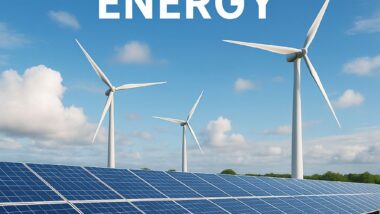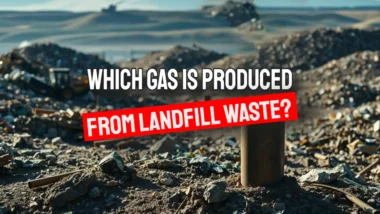Transform your farm with low carbon farming practices. How no-till, cover cropping, and precision agriculture sequesters CO2, ups soil health, and increases profit.
Key Takeaways About Low Carbon Farming Practices
- Low carbon farming techniques like no-till agriculture and cover cropping can sequester up to 5-10 tons of CO2 per hectare annually while improving soil health and farm resilience.
- Implementing precision agriculture tools reduces input costs by 15-30% while simultaneously lowering a farm's carbon footprint through targeted resource application.
- Combining livestock integration with crop production creates closed-loop systems that minimize emissions and maximize carbon storage throughout the farm ecosystem.
- Carbon farming practices generate multiple revenue streams through improved yields, reduced input costs, and potential carbon credit markets.
- eAgronom helps farmers transition to sustainable practices by providing digital tools to track carbon sequestration and maximize both environmental and economic benefits.
Agriculture stands at a crucial crossroads facing climate change – it can either continue contributing to global emissions or become part of the solution. The good news? Farmers worldwide are discovering that low carbon farming techniques not only benefit the planet but also improve their bottom line. As weather patterns become increasingly unpredictable, these practices offer a pathway to resilience while opening new revenue opportunities.
The transition to low carbon farming represents one of agriculture's most promising evolutions. Rather than viewing climate action as a burden, forward-thinking farmers are embracing these techniques as smart business decisions that simultaneously address environmental concerns. These methods work by either reducing direct emissions from farming operations or by actively pulling carbon from the atmosphere and storing it in soil and plants.

“Carbon Farming: Benefits, Technologies …” from eos.com and used with no modifications.
Carbon Farming: The Future of Sustainable Agriculture
Carbon farming transforms agricultural land from a carbon source into a carbon sink through specific management practices. This approach leverages the natural carbon cycle to combat climate change while improving farm productivity. By capturing atmospheric carbon dioxide and storing it in soil organic matter, plants, and trees, carbon farming directly addresses the greenhouse effect while building healthier ecosystems.
The beauty of carbon farming lies in its dual benefits – environmental and economic. Practices that sequester carbon typically improve soil structure, water retention, and nutrient cycling. This creates a positive feedback loop where healthier soils support more robust crops, which in turn capture more carbon. Rather than requiring farmers to choose between profitability and sustainability, carbon farming often enhances both simultaneously.
How Carbon Farming Fights Climate Change
Agriculture currently contributes approximately 24% of global greenhouse gas emissions, but with proper management, farms can become powerful carbon sequestration engines. When plants photosynthesize, they pull carbon dioxide from the air and convert it into plant tissue. Through careful management of this biological process, farmers can maximize how much carbon remains stored in the soil rather than returning to the atmosphere. This transformation turns farms from emission sources into valuable carbon sinks.
- Photosynthesis captures atmospheric carbon dioxide and converts it to plant biomass
- Root systems transfer carbon compounds deep into soil where they can remain stored for decades
- Soil microorganisms convert plant matter into stable forms of soil carbon
- Reduced tillage minimizes soil disturbance, preventing carbon release back to the atmosphere
- Perennial plants maintain living root systems year-round, continuously building soil carbon
The science behind carbon farming continues to evolve, but the basic principles remain consistent across different agricultural systems. By maximizing photosynthesis through year-round plant growth and minimizing soil disturbance, farmers create conditions where carbon naturally accumulates in their soil. This process can continue for decades, gradually building more resilient and productive farmland while offsetting emissions from other sectors.
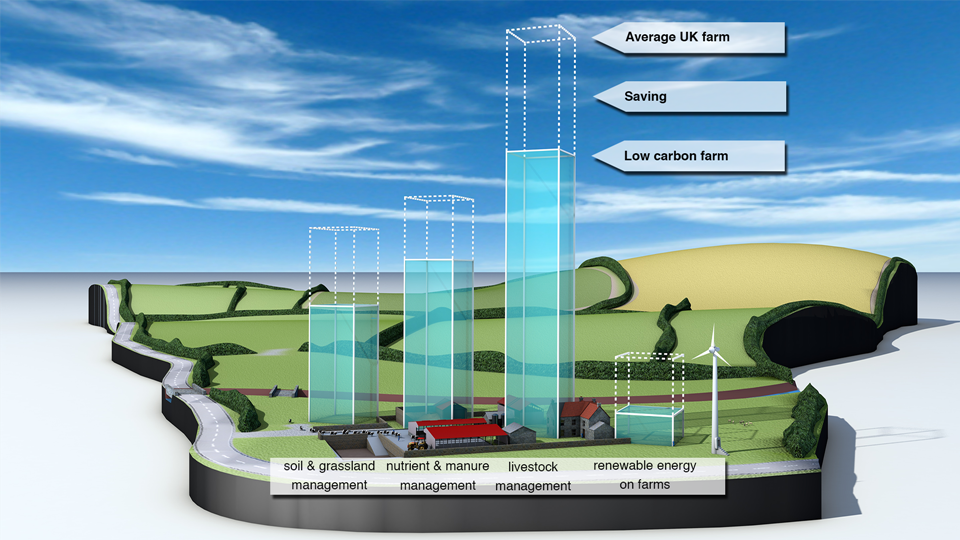
“Illustrating low carbon farming …” from www.carbonvisuals.com and used with no modifications.
The Economic Benefits for Farmers
The financial advantages of carbon farming extend far beyond potential carbon credit markets. While carbon offset payments may provide additional revenue, the most immediate economic benefits come from reduced input costs and improved production resilience. As soil organic matter increases, farms typically require less irrigation, fertilizer, and pesticides – often resulting in 15-30% lower operational expenses while maintaining or improving yields.
- Reduced fertilizer requirements as soil health improves, saving $50-150 per acre annually
- Lower irrigation needs due to better water retention, reducing water costs by up to 30%
- Decreased fuel consumption from fewer field operations
- Higher crop resilience during drought or extreme weather events
- Premium pricing opportunities through sustainability certification programs
- Potential carbon credit revenue ($15-45 per ton of sequestered carbon)
Many farmers find that the transition to carbon farming practices pays for itself within 2-5 years through operational savings alone. When combined with potential carbon market payments and improved crop performance during challenging weather conditions, the economic case becomes even more compelling. eAgronom's digital platform helps farmers track both their carbon sequestration and financial gains, creating a clear picture of return on investment throughout the transition.
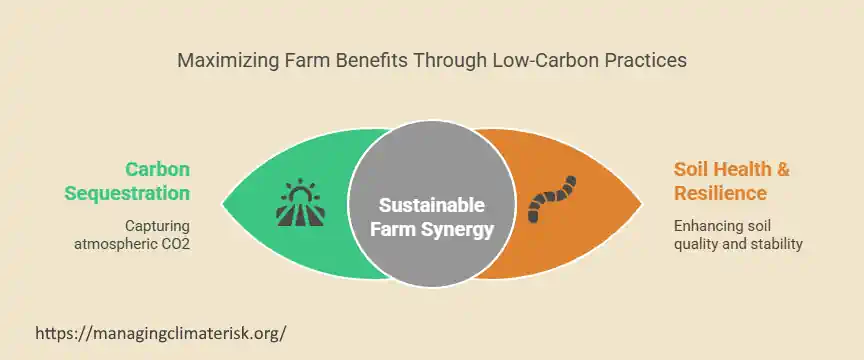
Top Soil Management Techniques for Carbon Sequestration
The foundation of successful carbon farming lies in soil management practices that minimize disturbance while maximizing organic inputs. These techniques work together to create ideal conditions for carbon storage, with different approaches suitable for various farming systems and regions. While some practices require significant transitions in equipment or management, others can be implemented gradually with minimal disruption to existing operations. For more insights, explore various climate change management strategies.
1. No-Till Farming: Keeping Carbon Underground
Traditional tillage releases stored soil carbon by exposing it to oxygen, accelerating decomposition and releasing CO2. No-till farming eliminates or significantly reduces soil disturbance, allowing carbon to accumulate year after year. This practice not only prevents carbon loss but also preserves soil structure, reduces erosion, and improves water infiltration. Studies show that converting from conventional tillage to no-till can sequester 0.3-0.5 tons of carbon per hectare annually while reducing fuel usage by up to 80%. The transition requires specialized equipment for planting and weed management but typically results in lower overall equipment costs long-term.
2. Cover Crops: Year-Round Carbon Capture
Cover crops turn fallow periods into carbon-capturing opportunities by maintaining living plants on fields year-round. These plants photosynthesize during seasons when fields would otherwise be bare, pumping carbon into the soil through their root systems. Popular options include legumes like clover and vetch that also fix nitrogen, reducing fertilizer needs, or grasses like cereal rye that build substantial biomass quickly. The carbon benefit is twofold: atmospheric carbon is captured through photosynthesis, and soil carbon is protected from erosion and oxidation that typically occurs on bare fields.
Implementing cover crops successfully requires careful timing and species selection based on your climate, soil type, and main crop rotation. Many farmers start with simple single-species covers before advancing to complex multi-species mixtures that maximize diversity below and above ground. The initial investment in seeds and management can range from $20-50 per acre, but this is typically offset by reduced fertilizer needs and improved main crop performance within 1-3 growing seasons.
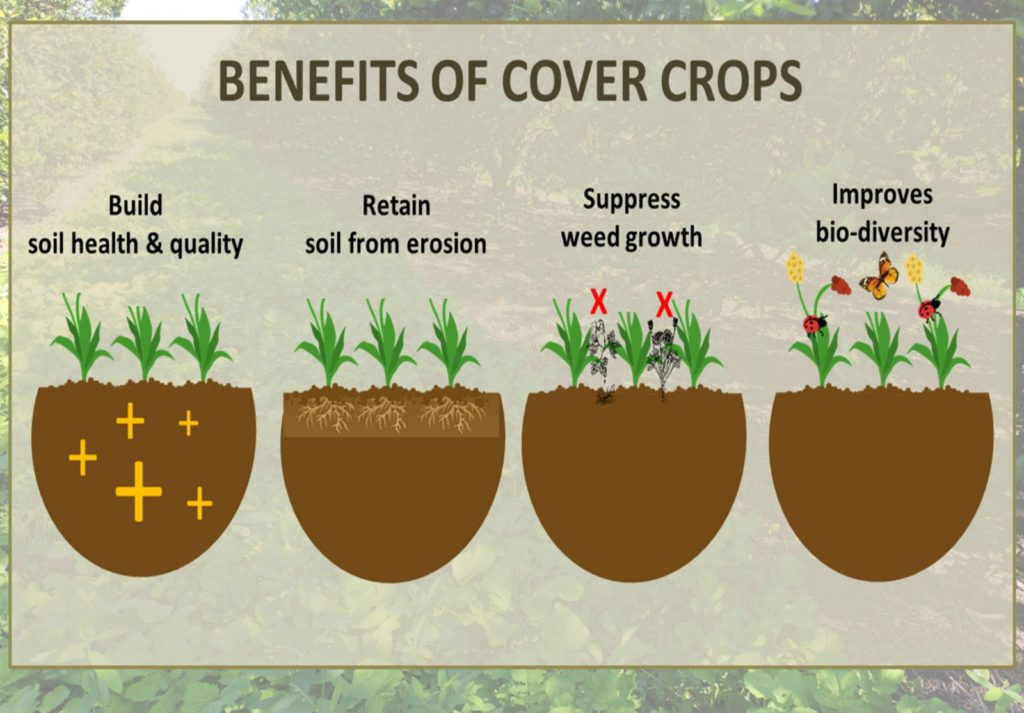
“What are Cover Crops? | Mandako” from mandako.com and used with no modifications.
3. Crop Rotation: Building Healthier Soil Structure
Diverse crop rotations dramatically increase carbon sequestration potential compared to monocultures or simple rotations. Different plant species contribute varied root architectures and exudates that feed diverse soil microbiomes, creating more stable forms of soil carbon. Including deep-rooted crops like sunflowers or perennials transports carbon deeper into the soil profile where it's less likely to be released. The carbon benefits complement other advantages like pest cycle disruption, improved nutrient cycling, and distributed income streams throughout the year.
Expanding rotations beyond traditional patterns requires market research to ensure viable sales channels for new crops. Many farmers find success by integrating high-value specialty crops or forming cooperatives to access markets that individual producers might struggle to enter alone. The planning complexity increases with rotation diversity, but so does resilience against market fluctuations and environmental challenges.
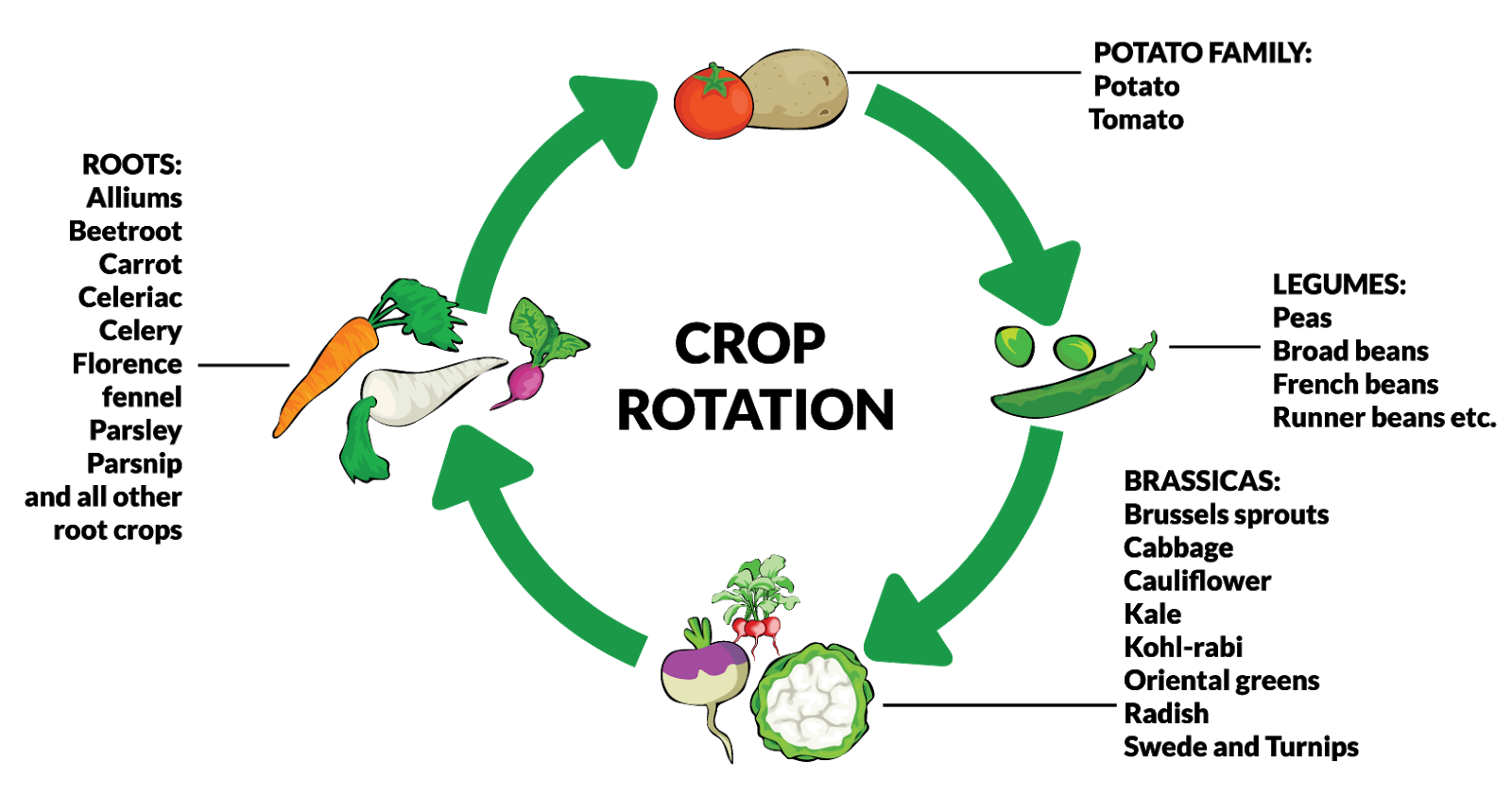
“Agriculture — PSCI” from psci.princeton.edu and used with no modifications.
4. Composting and Organic Amendments
Strategic application of compost and other organic amendments rapidly accelerates carbon sequestration while improving overall soil health. These materials directly add carbon while stimulating soil biological activity that creates stable carbon compounds. Research shows that regular compost applications can sequester 1-2 tons of carbon per hectare annually beyond the direct carbon added in the compost itself. This “carbon multiplication effect” occurs because compost feeds soil organisms that then convert plant matter into more stable forms of soil carbon. Learn more about carbon removals and achieving net zero.
On-farm composting transforms what might otherwise be waste materials into valuable soil amendments, keeping carbon and nutrients within the farm system. The process requires space, equipment for turning, and careful management to ensure proper decomposition without creating methane emissions. For farms without composting capacity, partnering with municipal compost programs or neighboring livestock operations can provide access to quality organic amendments.
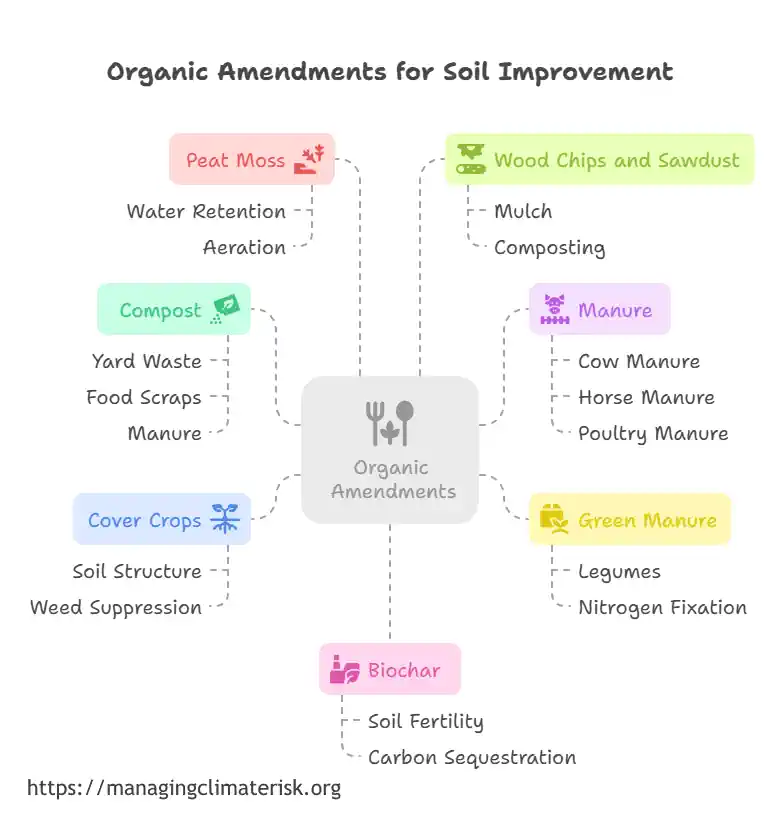
5. Reduced Synthetic Fertilizer Application
Synthetic nitrogen fertilizers represent one of agriculture's largest carbon footprints, both in production emissions and through soil microbiome disruption that reduces natural carbon sequestration. Precision application combined with increased reliance on biological nitrogen fixation can maintain productivity while dramatically reducing this carbon cost. Techniques like split applications, nitrogen sensors, and enhanced efficiency fertilizers ensure nutrients are available when and where crops need them, preventing both waste and environmental damage.
The transition away from heavy synthetic fertilizer dependence typically occurs gradually as soil health improves. Many farmers find they can reduce rates by 10-15% annually for several years as organic matter builds and nutrient cycling becomes more efficient. Complete elimination is rarely the goal, but reductions of 50-70% are achievable in many systems while maintaining or improving yields through complementary biological approaches.
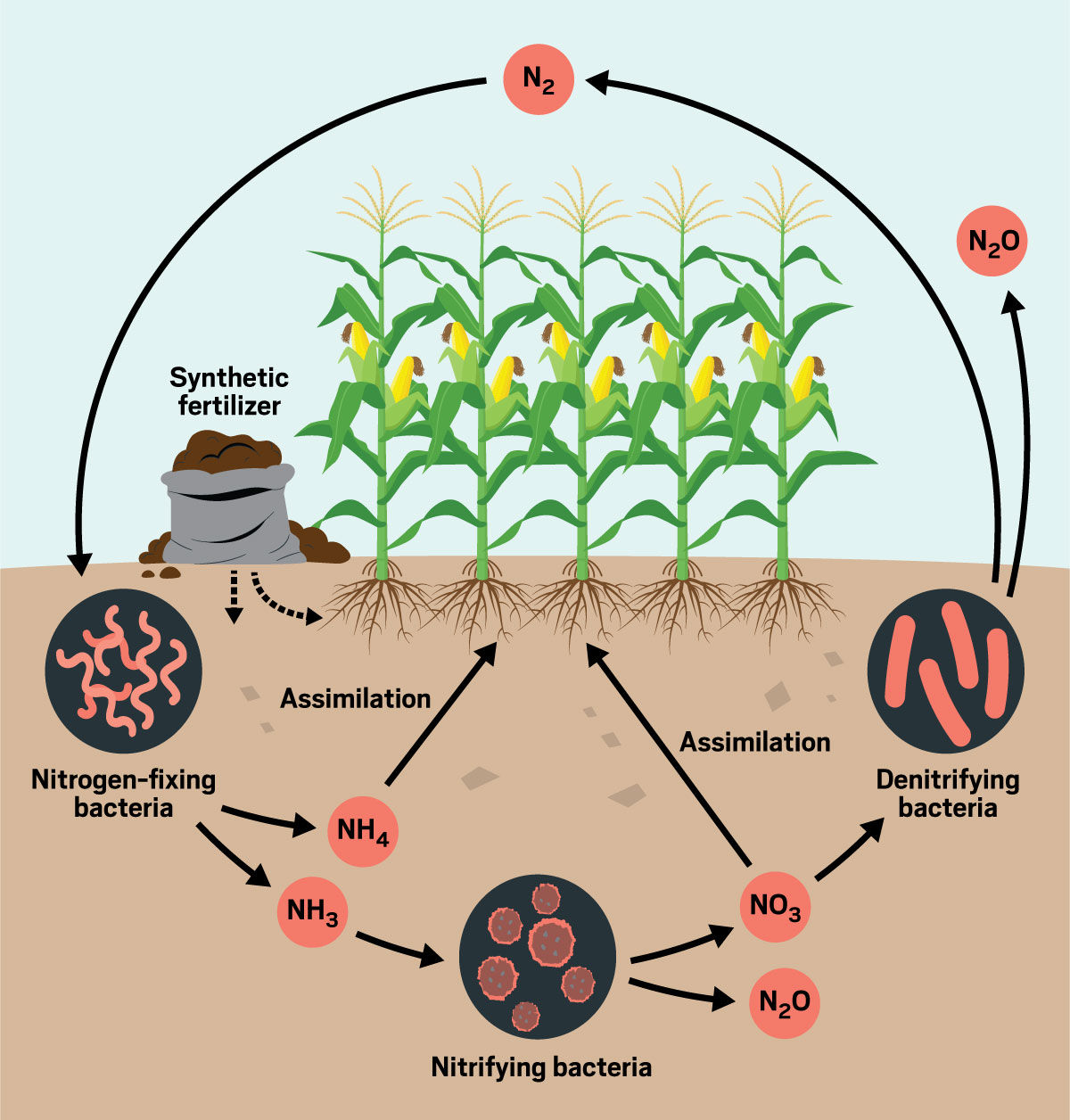
“Can microbes replace synthetic fertilizer?” from cen.acs.org and used with no modifications.
Precision Agriculture Tools That Reduce Carbon Footprint
Technology offers powerful tools for optimizing resource use while minimizing emissions across farm operations. These systems allow for targeted interventions rather than blanket applications, reducing waste and preventing unnecessary carbon costs. The initial investment in precision equipment can be substantial, but operational savings and performance improvements typically provide returns within 2-5 years while simultaneously reducing environmental impact. For more insights, check out this guide to low carbon farming.
GPS-Guided Field Operations
GPS guidance systems dramatically reduce overlap in field operations, saving fuel, time, and inputs while minimizing soil disturbance. Studies show that even modest reductions in overlap through guidance systems can reduce fuel consumption by 5-15% while ensuring more precise application of all inputs. The carbon benefits multiply through reduced compaction from fewer passes, more targeted input application, and lower embedded carbon costs from decreased material usage. Advanced systems offering centimeter-level accuracy allow for controlled traffic farming where all equipment follows the same wheel tracks, limiting compaction to small portions of the field.
Variable Rate Technology for Targeted Inputs
Variable rate application technologies deliver precisely what's needed where it's needed, eliminating waste and optimizing resource use. These systems integrate soil mapping, yield data, and real-time sensors to apply inputs at rates matching field conditions and crop requirements. The carbon savings come from both reduced input quantities and improved plant performance, with typical reductions of 10-30% in fertilizer and chemical use while maintaining or improving yields. Beyond the direct emissions avoided from manufacturing fewer inputs, the improved efficiency means less nitrogen volatilization and less fossil fuel used in application.
Remote Sensing for Smarter Resource Management
Satellite imagery, drones, and ground sensors provide unprecedented insight into field conditions, allowing for early problem detection and targeted interventions. These technologies identify stressed areas before they're visible to the human eye, enabling precision management decisions that optimize carbon outcomes. For example, detecting nitrogen deficiency in specific zones allows for targeted application rather than whole-field treatment, reducing overall fertilizer use while improving crop performance. To learn more about effective climate management strategies, explore our article on climate change management strategies.
The data collected through remote sensing creates valuable historical records that inform long-term management decisions. By analyzing patterns across seasons, farmers can identify persistent problem areas requiring special attention or potential zones for alternative management like perennial plantings or wetland restoration. This targeted approach maximizes carbon sequestration potential by optimizing management for each field zone.
Digital monitoring platforms like eAgronom integrate these data streams into user-friendly dashboards that support both daily operational decisions and long-term carbon strategy. By connecting field-level activities to their carbon impacts, these tools help farmers prioritize practices with the greatest climate benefit while monitoring progress toward carbon goals. The resulting data can support verification for carbon market participation or sustainability certification programs.
![]()
“crop imaging in remote sensing …” from blog.eagronom.com and used with no modifications.
Livestock Integration for Complete Carbon Cycling
Thoughtfully managed livestock transform carbon farming systems by accelerating nutrient cycling, diversifying revenue streams, and utilizing plants that wouldn't otherwise contribute to human food systems. Rather than viewing crops and animals as separate enterprises, integrated systems leverage their complementary relationships to maximize carbon benefits while improving overall farm resilience and productivity. These systems mimic natural ecosystems where plants and animals evolved together in balanced relationships.
Rotational Grazing Systems
Well-managed rotational grazing stimulates plant growth and root development, potentially sequestering more carbon than ungrazed systems while producing nutritious animal products. This approach moves livestock frequently through paddocks, allowing complete plant recovery before regrazing. The intense grazing followed by adequate rest mimics natural herbivore patterns, promoting deep root growth and diverse plant communities that maximize carbon capture. Animals spread manure evenly across the landscape, eliminating the concentrated emissions associated with confined feeding operations while returning nutrients directly to the soil.
Manure Management for Reduced Emissions
Proper manure handling transforms a potential emission source into a valuable carbon-building resource. Compared to conventional manure lagoons that produce significant methane emissions, composting or direct field application with minimal storage dramatically reduces the carbon footprint of livestock operations. Advanced techniques like vermiculture or biochar-amended composting can enhance the carbon benefits further by creating more stable soil amendments. The integration of manure management with crop production creates closed-loop nutrient cycling that reduces dependence on imported fertilizers while building soil carbon.
For farms with larger livestock concentrations, anaerobic digesters capture methane from manure and convert it to renewable energy. This technology prevents potent greenhouse gas emissions while producing electricity or heat that displaces fossil fuel usage. The remaining digestate retains most nutrients and can still be applied to fields as a valuable fertilizer and soil amendment, maintaining the carbon and nutrient cycling benefits.
Agroforestry: Trees as Carbon Storage Powerhouses
Incorporating trees into agricultural landscapes creates powerful carbon sinks while diversifying farm production and enhancing ecosystem services. By adopting low carbon farming practices rees store carbon in their woody biomass for decades or centuries, far longer than annual crops can achieve. The deep, permanent root systems of trees also transport carbon deep into soil profiles, creating stable long-term storage. Beyond carbon benefits, agroforestry systems improve water quality, provide wildlife habitat, and create microclimates that can protect crops and livestock from extreme weather events.
The economic returns from agroforestry systems often build gradually but can ultimately exceed those of conventional agriculture in many regions. While trees may take years to reach full production, they typically require fewer inputs than annual crops and can access nutrients and water from soil depths beyond the reach of conventional crops. This resource partitioning allows for more efficient use of available sunlight, water, and nutrients across the three-dimensional farm landscape.
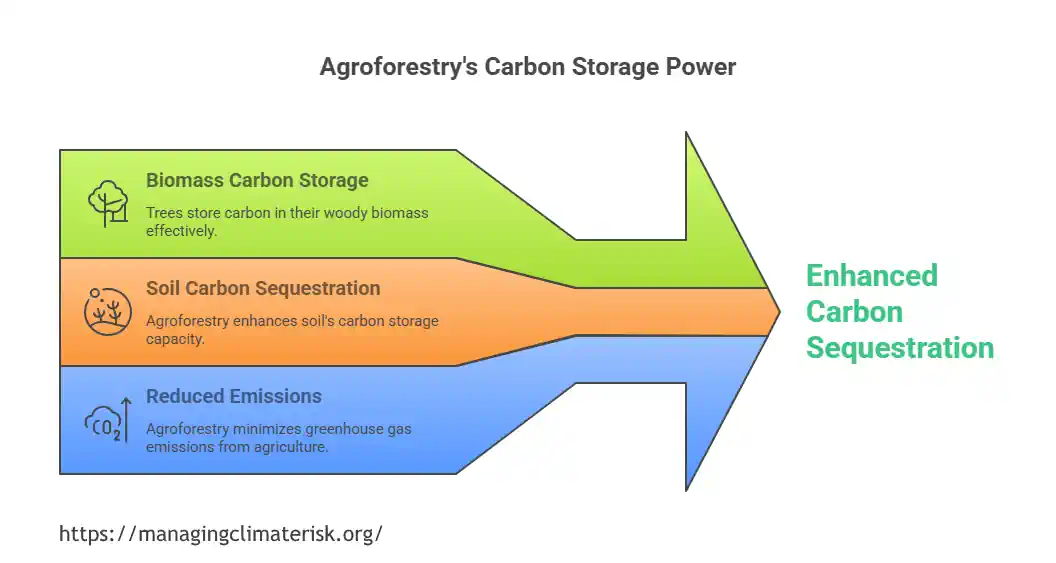
Silvopasture: Combining Trees and Livestock
Silvopasture integrates trees, forage, and livestock in a mutually beneficial system that maximizes carbon sequestration across multiple layers. The trees provide shade and shelter for animals, reducing heat stress and improving welfare while storing carbon in their biomass. Meanwhile, livestock help manage understory vegetation and accelerate nutrient cycling through their manure. Research shows these systems can sequester 2-5 times more carbon than conventional pastures or forests alone while providing multiple income streams from timber, livestock, and potentially fruits or nuts.
Successful silvopasture requires careful tree species selection and spacing to balance light availability for understory forage with optimal tree growth. Protection strategies for young trees are essential until they grow large enough to withstand livestock pressure. Many farmers begin by planting tree rows or clusters in existing pastures, gradually transitioning more acreage as they become comfortable with the management requirements and see the benefits firsthand. For those interested in sustainable practices, exploring climate change management strategies can provide additional insights into effective agricultural techniques.
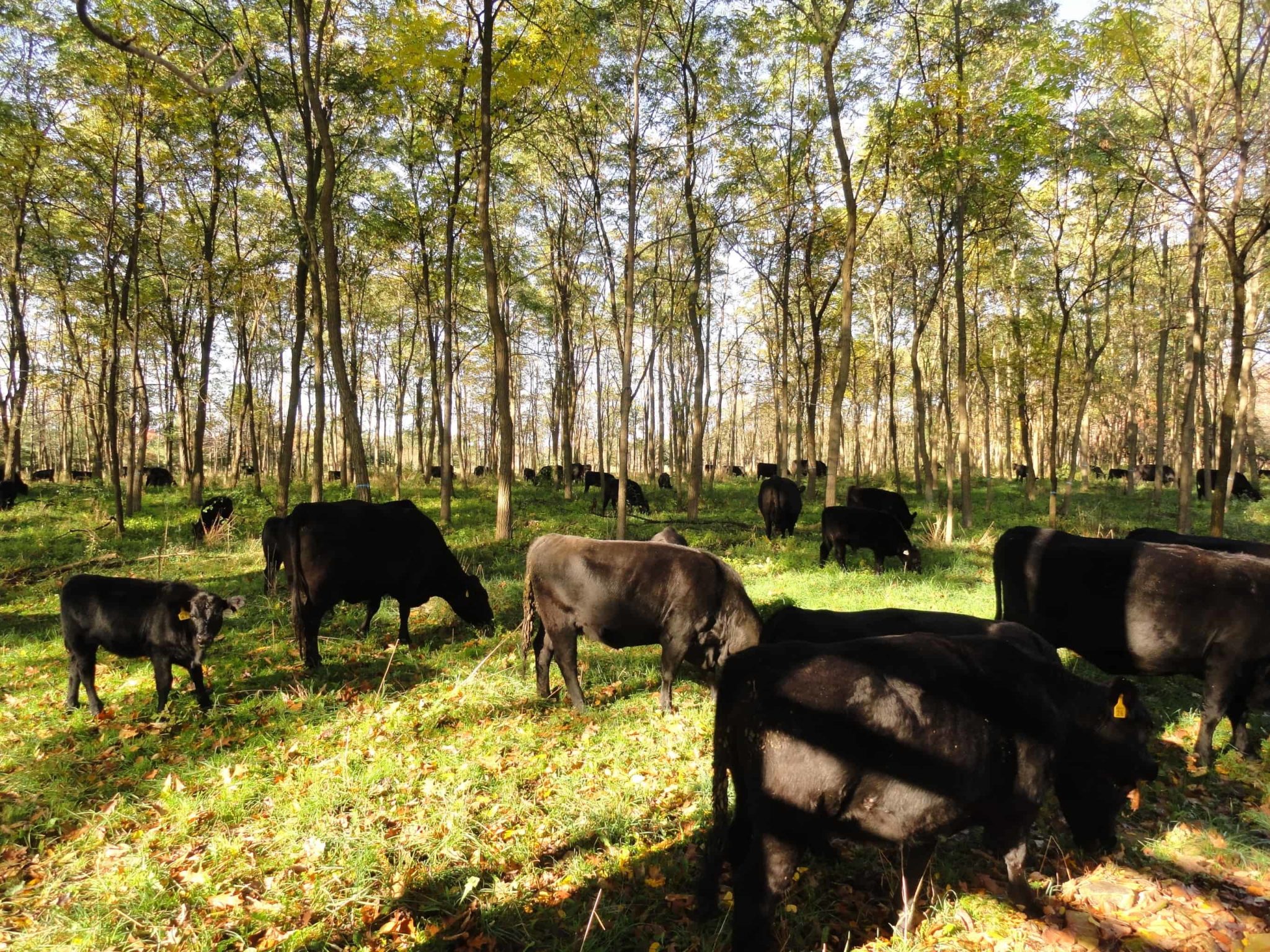
“Successful Silvopasture …” from smallfarms.cornell.edu and used with no modifications.
Windbreaks and Shelter Belts
Strategic tree plantings around field borders provide significant carbon benefits while improving crop production conditions throughout the protected area. These linear forest plantings reduce wind erosion, decrease evaporation, and moderate temperature extremes – all of which support better crop performance while building soil carbon. A well-designed windbreak can protect an area extending 10-30 times the height of the trees, making this an efficient use of farmland for multiple benefits.
Beyond their carbon and microclimate benefits, windbreaks create valuable wildlife corridors that support beneficial insects, pollinators, and natural predators of crop pests. The biodiversity improvements from these relatively small tree plantings can significantly reduce pest pressure throughout the farm system, decreasing the need for chemical interventions while improving overall ecosystem resilience.
Alley Cropping Techniques
Alley cropping arranges trees in widely-spaced rows with annual or perennial crops grown in the “alleys” between them. This configuration maintains most of the land in agricultural production while gaining carbon sequestration benefits from the trees. The system can be designed for eventual timber harvest, continuous nut or fruit production, or primarily for ecosystem services. The crop alleys might contain traditional row crops, high-value vegetables, or perennial forages depending on the farm's goals and markets.
Modern alley cropping systems adopted by farms following low carbon farming practices often incorporate precision agriculture technologies to manage the varying conditions across the field. As trees grow and create shade patterns, different crops or varieties might be selected for different positions within the alleys. This adaptive management maximizes productivity throughout the tree lifecycle while maintaining continuous carbon sequestration both above and below ground.
![]()
“Practice Highlight: Alley Cropping …” from snohomishcd.org and used with no modifications.
Water Management Strategies That Save Carbon
Water management directly impacts carbon sequestration potential, particularly in the face of increasing climate variability. Well-designed water systems reduce emissions associated with pumping while creating conditions that maximize plant growth and soil carbon development. As water becomes increasingly precious in many agricultural regions, these strategies offer dual benefits for climate resilience and mitigation.
Efficient Irrigation Systems
Upgrading to more efficient irrigation technology reduces both water consumption and the energy required for pumping, cutting emissions while often improving crop performance. Drip irrigation delivers water precisely where needed, minimizing evaporation and runoff while maintaining optimal soil moisture for plant growth and soil biology. Soil moisture sensors and automated controls further optimize water application, ensuring resources are used only when and where beneficial.
The carbon benefits of irrigation efficiency come from multiple sources: reduced energy for pumping, better plant performance leading to increased photosynthesis, and prevention of the soil carbon losses that occur during drought stress or waterlogging. For many farms, irrigation improvements offer some of the quickest financial returns among carbon farming practices due to immediate savings in water and energy costs.
Rainwater Harvesting
Capturing rainfall where it falls reduces dependence on pumped irrigation while preventing erosion that would otherwise carry away valuable topsoil and organic matter. Simple structures like contour berms, swales, and detention basins slow water movement across the landscape, allowing more infiltration into the soil profile where it becomes available for plant growth. These passive water harvesting approaches require minimal ongoing energy inputs while building farm resilience against both drought and flooding events. For more strategies, explore climate change management strategies.
More intensive water harvesting might include farm ponds, tanks, or reservoirs that store water during wet periods for use during dry times. While these systems require initial investment, they reduce long-term pumping needs and associated emissions. Strategic placement of water storage features can also create additional wildlife habitat, further enhancing biodiversity benefits across the farm landscape.
Transitioning Your Farm to Low-Carbon Practices
The journey toward low-carbon farming works best as a gradual, strategic transition rather than an overnight transformation. Successful farmers typically begin with practices that address their most significant challenges or offer the quickest returns, then expand their approach as they build knowledge and confidence. This phased implementation allows for learning and adaptation without overwhelming farm resources or operations. For more information on strategies, check out this guide to carbon-neutral farming.
Creating a carbon farm plan provides a roadmap for this transition, identifying short, medium, and long-term goals based on your specific context. This planning process should consider your farm's unique soil types, climate, markets, equipment, and personal goals. The most successful carbon farming transitions align climate benefits with solutions to existing farm challenges, creating multiple motivations for change. For more information on effective practices, explore 10 best carbon farming practices.
Start Small: Pilot Projects for Testing
Beginning with small-scale trials allows you to adapt practices to your specific conditions before committing significant resources. Select representative fields or portions of fields where you can implement new practices while maintaining comparison areas managed conventionally. These side-by-side comparisons provide concrete evidence of what works on your farm while building your confidence and knowledge with new techniques. Document your observations carefully, including both challenges and successes, to inform future expansion.
Common starting points include cover crops on a few fields, reduced tillage in suitable crops, or precision technology adoption for more efficient input use. Each farm's entry point depends on their current operation, equipment availability, and specific goals. The key is selecting initial practices that align with your farm's immediate needs while building toward longer-term carbon objectives.
Finding Financial Support and Carbon Credits
Numerous programs now exist to support farmers transitioning to carbon-friendly practices. These range from government conservation programs like EQIP and CSP in the United States to private carbon markets that pay directly for verified carbon sequestration. Many agricultural suppliers and food companies also offer incentives for sustainability practices within their supply chains. eAgronom helps farmers navigate these complex options to find the programs best suited to their specific practices and geography.
Measuring Success: Carbon Accounting on Your Farm
Quantifying your carbon impact requires systematic measurement and record-keeping, but these efforts increasingly bring market rewards through premium prices or direct carbon payments. Modern carbon accounting combines field sampling with modeling based on your specific management practices. While perfect precision remains challenging, these methods provide reasonable estimates of your farm's climate impact and sequestration potential.
Digital tools like those provided by eAgronom simplify this accounting process by integrating farm management records with carbon models. By tracking your practices throughout the season, these platforms automatically calculate associated carbon impacts without requiring separate data entry. The resulting carbon inventories can support participation in formal carbon markets or sustainability certification programs that bring premium prices.
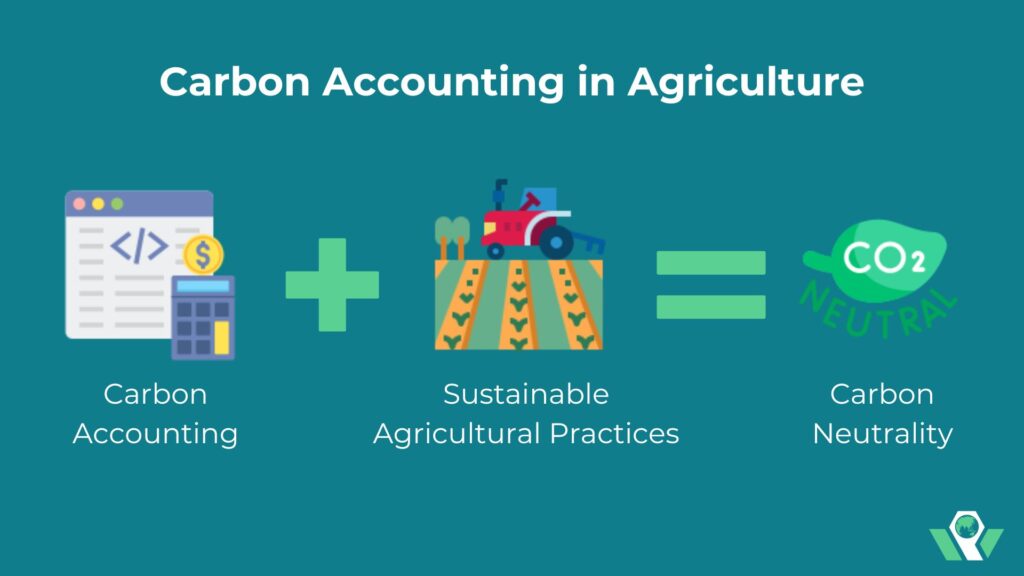
“Carbon Accounting in Agriculture …” from www.planetwise.io and used with no modifications.
Real Success Stories: Farmers Leading the Carbon Revolution
Across climates and production systems, innovative farmers are demonstrating the potential of carbon farming to transform agriculture. In the Midwest United States, Rick Clark has eliminated synthetic inputs while building soil organic matter through diverse cover crops and livestock integration. His farm now sequesters more carbon than it emits while producing high yields of corn, soybeans, and wheat. In Australia, Colin Seis pioneered “pasture cropping” – seeding annual grains directly into perennial pastures without tillage – creating a system that builds soil carbon while producing both livestock and grain from the same acreage. These pioneers and thousands like them are creating the models for agriculture's climate-positive future.
Your Next Steps for a Climate-Friendly Farm
Begin your carbon farming journey by assessing your current operation and identifying practices that could reduce emissions or increase sequestration while addressing existing challenges. eAgronom's platform can help you understand your baseline carbon footprint and simulate the impact of different practices before implementation. Remember that carbon farming is not about perfection but continuous improvement – each step toward better soil health and reduced emissions contributes to both climate solutions and farm resilience.
Frequently Asked Questions About Low Carbon Farming Practices
As farmers consider the transition to low-carbon practices, several common questions arise about the practical implications for their operations. The answers depend somewhat on specific farm contexts, but general patterns have emerged from research and farmer experience worldwide. Understanding these typical outcomes can help set realistic expectations while planning your carbon farming journey.
The following questions address the most common concerns raised by farmers considering carbon-friendly practices. While every farm will have unique experiences, these answers reflect patterns observed across diverse agricultural systems and regions.
How long does it take to see benefits from carbon farming practices?
The timeline for benefits varies by practice and local conditions, but many farmers report seeing initial improvements within 1-3 years. Soil physical properties like infiltration and aggregate stability often improve first, followed by biological activity increases and nutrient cycling enhancements. Measurable carbon increases typically require 3-5 years of consistent management, though benefits to crop resilience and input efficiency may appear sooner. The full potential of carbon sequestration practices generally develops over 10-20 years as soil biology and structure continue to improve.
Financial benefits often follow a similar timeline, with some practices like precision application or reduced tillage potentially showing immediate cost savings, while others like cover cropping may take 2-3 years to provide returns through reduced inputs or yield improvements. The economic case strengthens over time as multiple benefits compound and initial transition costs are recovered.
Do low-carbon farming techniques reduce yields?
Many farmers experience a transition period where yields may slightly decrease or remain stable before improving beyond conventional baselines. This adjustment phase varies widely depending on starting soil conditions, climate, and which practices are implemented. Systems that make multiple dramatic changes simultaneously (like converting to organic no-till) typically experience more significant yield challenges than gradual transitions. After the adjustment period, well-managed low-carbon systems frequently achieve yields equal to or greater than conventional approaches, particularly during stress conditions like drought or excessive rainfall.
What government programs support farmers transitioning to low-carbon methods?
Support programs vary by country and region, but many agricultural departments now offer financial and technical assistance for climate-friendly practices. In the United States, the USDA's Natural Resources Conservation Service provides cost-sharing through EQIP and CSP programs for practices like cover crops, reduced tillage, and precision nutrient management. The European Union's Common Agricultural Policy increasingly ties subsidies to environmental services including carbon sequestration. Additionally, many regions have state/provincial or local programs providing further support. eAgronom can help identify specific programs available in your area that align with your planned practices.
How much carbon can my farm potentially sequester?
Sequestration potential depends on your climate, soil type, and management practices, but typical ranges for comprehensive carbon farming systems are 0.5-3 tons of CO2 equivalent per acre annually. Starting carbon levels significantly impact this potential – depleted soils often show faster initial gains, while already carbon-rich soils may sequester at slower rates but can maintain high storage levels. The highest sequestration rates generally come from systems combining multiple practices like cover crops, reduced tillage, diverse rotations, and organic amendments. Your specific potential can be estimated more precisely through soil testing and carbon modeling tools like those provided by eAgronom.
Can small farms effectively implement carbon farming techniques?
Small farms are often well-positioned for carbon farming success due to their ability to implement management-intensive practices and carefully monitor outcomes across their limited acreage. While some practices like cover cropping or composting may require additional labor, many small farms already utilize diversified systems that naturally build soil health. Equipment modifications for practices like reduced tillage can present challenges on small farms with limited capital, but equipment-sharing arrangements and specialized small-scale machinery options are increasingly available. Additionally, small producers often have direct marketing channels where they can capture premium prices for climate-friendly production methods, improving the economic case for transition.
For farmers of any scale interested in exploring their carbon farming potential, eAgronom provides digital tools to simplify planning, tracking, and verifying climate benefits alongside production records. Unlocking agriculture's carbon potential requires both individual farm innovation and collective tools to measure and reward these valuable climate services.
As the world grapples with climate change, innovative solutions are being explored to reduce greenhouse gas emissions. One such method is the conversion of waste materials into renewable energy sources. For instance, sewage can be converted to biogas, providing a sustainable energy alternative while minimizing waste. This approach not only helps in reducing carbon footprints but also promotes a circular economy by turning waste into a valuable resource.
A Success Story: LFG-to-Energy Conversion Units Transforming Landfill Gas in California
California's landfill gas-to-energy conversion units are redefining waste management by transforming captured methane into electricity, renewable natural gas for vehicles, and liquefied natural gas. These advancements mark a significant step towards sustainability, reducing carbon footprints and turning waste into a valuable, clean energy resource…
Which Gas is Produced from Landfill Waste: The Gas that Trash Produces…
Discover which gas is produced from landfill waste and understand its environmental impact and potential energy use. Explore landfill gas management.
Biogas Innovators Take Centre Stage: The World Biogas Awards 2024
Since 2011, a prestigious ceremony has been quietly moving the world on a path back to sustainability – not with flashy gadgets or social media trends, but with something far more fundamental: biogas innovation. The annual AD and Biogas Industry Awards, held in Birmingham, UK, celebrate the brilliance behind this renewable energy source, recognizing the […]
Climate Change Management Strategies: A Comprehensive Guide
Climate change poses significant challenges to the planet and its inhabitants. To address these challenges, it is essential to adopt comprehensive climate change management strategies. These strategies aim to mitigate greenhouse gas emissions, adapt to the impacts of climate change, and build resilience to future climate-related risks. Purpose of Climate Change Management Strategies The purpose […]






